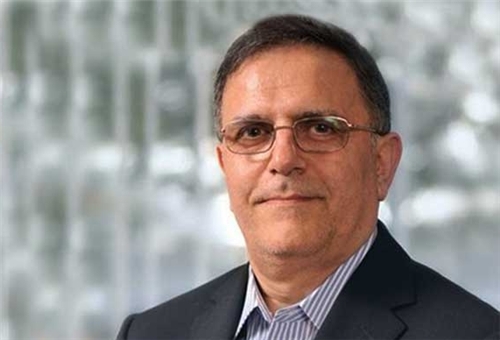
October 18-2013
The Central Bank will be granted more independence under the country’s new government to curb one of the world’s highest inflation rates, Governor Valiollah Seif said.
President Rohani’s cabinet has agreed to separate monetary and fiscal policies, leaving the former under Central Bank control, Seif said in an interview in Washington with Bloomberg news.
That will allow the bank to focus on its priority of “controlling liquidity and bringing down inflation,” he said.
“We are now facing stagflation,” Seif said while attending the annual meetings of the International Monetary Fund and the World Bank. “Expansionary monetary and fiscal policies will not help growth.”
Iran’s high inflation rate is partly due to “one-off effects, particularly the impact of exchange rate depreciation,” Masood Ahmed, head of the fund’s Middle East and Central Asia department, told Bloom-berg. He said Iran’s monetary policy must seek to prevent a “second-round set of effects on inflation.”
Granted more independence under Rohani, the bank can “start doing what Central Banks do in this sphere,” said David Butter, a Middle East analyst and associate fellow at foreign policy research group Chatham House in London. “Iran is putting out this image, after eight years of having their economic policy being very politicized, that they’ve started to get back to something more rational.”
Seif said that under President Ahmadi-nejad, credit allocation “was not based on the analysis of experts,” with about 40 percent of all lending diverted toward the Mehr housing project for the poor, which was Ahmadi-nejad’s pet project.
Government intervention helped drive non-performing loans to as high as 23 percent of all credit in 2010, according to the IMF. Seif said it now stands at 15 percent and the Central Bank is “determined to bring it down” further as part of efforts to stabilize the banking system.
Iran’s monetary policy is decided by the Money and Credit Council, headed by the Central Bank chief.
Sanctions imposed by the US and EU have reduced Iran’s oil revenues and cut off its banks from international financial flows. Foreign-exchange reserves will plunge to $70 billion by the end of this year, and Iran only has immediate access to about $20 billion of that, according to a study by research firm Roubini Global Economics and Mark Dubowitz, president of the Foundation for Defense of Democracies.
Seif declined to disclose the value of the Central Bank’s holdings. The bank claimed in July that it had more than $100 billion in reserves.
Economic growth will probably be flat in the current Persian year, after a contraction of 5.4 percent last year, Seif said. The economy may grow 3 percent in the coming year, he said.

















